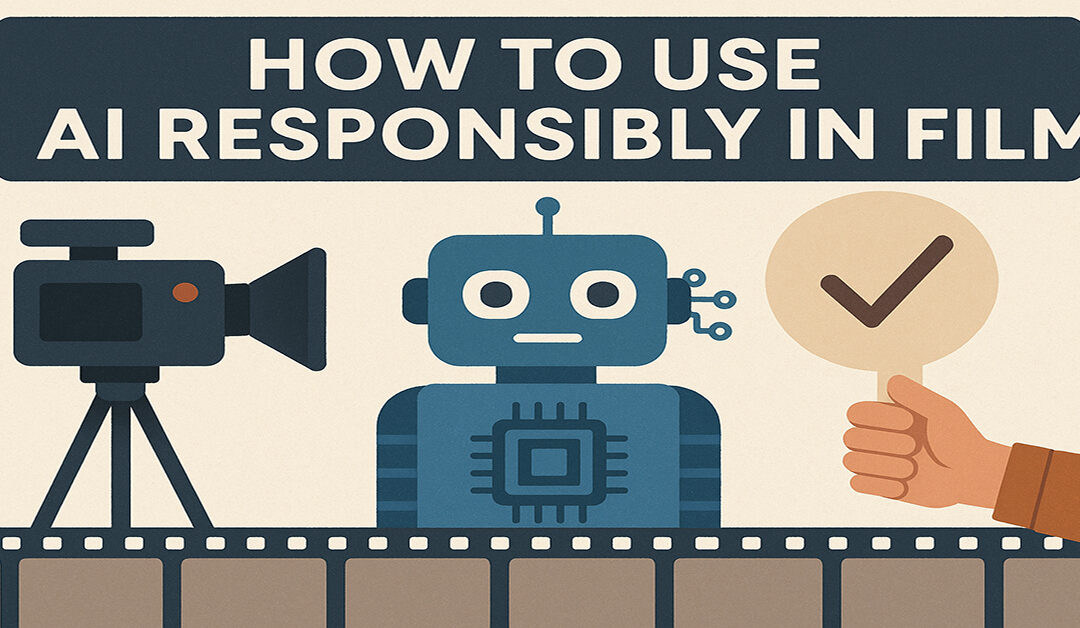Filmmaking has always been driven by technology. From the beginning with the invention of cameras, to the introduction of sound, colour, and VFX, technological breakthroughs have allowed us to tell stories in ways that couldn’t be told before. With Artificial Intelligence (AI) hitting the market and continually developing, the discussion around its use in filmmaking is a touchy subject.
Many argue that AI has no place in art forms whereas others say it can be a tool to be used to increase efficiency. I believe both points can be true. But how can you use AI and still keep your artistic integrity? Let’s discuss how AI can be used responsibly in filmmaking.
Probably the least interesting and therefore least controversial topic of AI use would be for logistics. Production planning is a long process that can include tedious tasks. By giving AI a short prompt, it can: generate a list of potential shooting locations in a selected area, help create a budget and keep track of spending, create a complete shooting schedule including call times for all cast and crew.
Using AI to help streamline the process of the logistics of filmmaking allow the artist to delve into the creative work quicker and easier. Creativity and imagination are more accessible when the stress of figuring out producing problems has been relieved, and AI helps with that.
Writing a strong script is essential to build a career in filmmaking. In the past, a screenwriter would seek opinions from industry professionals and take advice to get their script produced. It’s a great avenue to network and garner an inner circle you can count on for constructive criticism to make your work better. The problem with this is that seeking professional help can be expensive for screenwriters. And for those who want to break into the industry, they don’t have the extra funds to spend on their script.
AI can be used to give instant feedback on entire scripts for free. Users can upload a PDF version of their script and give the AI a prompt, telling the computer to evaluate the script according to core categories such as concept, plot, structure, characters, pacing, execution, and rate the categories based on a given scale. Then the computer weighs each category to provide critiques. These critiques can include the strengths, weaknesses and suggestions to implement. This is a great way for filmmakers to get immediate feedback without adding any cost. AI can be a powerful tool for overcoming writer’s block and exploring new creative avenues.
After the work of pre-production, production, and post-production, the marketing and delivery of the film becomes the focus point. Getting as much attention as possible toward the film involves creative strategies and planned execution. Promotional materials such as trailers, posters, and social media can be made millions of different ways and making the right choices can be difficult especially for a low-budget, small team film who don’t have the experience in marketing.
AI can be a tool to help come up with different design choices of the poster, come up with different versions of a trailer, highlighting different high-selling points of the film and each version targeting a different audience (eg. one for sci-fi, one for mystery, one for romance), or ask the computer to look at viral trends that are going on social media to help plan content to shoot and create a schedule to post on different platforms to reach your target audience. Implementing these strategies can maximize your film’s potential of bringing attention to your film and keeping hold of your audience.
It’s important to note that if you want to keep your artistic integrity you shouldn’t use the materials that AI can generate for you. Instead, use AI for inspiration towards creative choices. Let it be your assistant that can guide you in the right direction.
